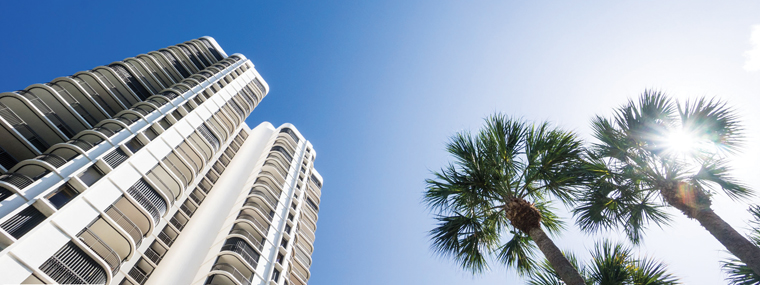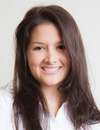
What Do You Do with the Hurricane Shutters?
By Alessandra Bianchini / Published February 2020

The association just signed a contract for concrete restoration; each unit is getting new waterproofing and spray deck on its balcony floor; and a new, fresh coat of paint is being applied to the exterior of the building. The whole building looks fresh and new, but what do you do when unit owners want to reinstall existing old shutters on your newly updated building? For South Floridians, this question is at the forefront of almost all condominium restoration projects. The threat of hurricanes is a reality for those of us living on the East Coast, and aluminum shutters offer a safety net to the threat of broken sliding glass doors and windows. However, with a new restoration project underway there are many items to consider.

Often the directors of the association are split as to whether or not to allow members to reinstall old shutters on a building that has hurricane-rated impact glass. Many owners feel shutters make a building look outdated and are unnecessary if the units have impact windows and doors. Others feel that impact doors/windows do not offer the same quality of protection as shutters and opt for both options. Being faced with such a problem, there are many questions the board should consider. The first question is whether the board has the authority to dictate to unit owners what to do with the shutters. The board should turn to the condominium’s bylaws and its attorney. This will offer a clear answer of with whom the authority rests.
Other items to consider are whether installing the old shutters voids the restoration contractor’s warranty. Often a contractor’s warranty is void if there has been a third-party modification, i.e., installation of shutters by another contractor into the newly applied balcony waterproofing. Conversely, removing and reinstalling the shutters may void the original shutter installer’s warranty.
Lastly, a major item to consider is whether the impact doors have been installed correctly. The board does not want to mandate the removal of all shutters without having knowledge as to the status of the impact doors/windows. All doors should have been permitted during the original installation, inspected by the governing authorities, and accompanied by a notice of acceptance.
The best way to approach the shutter situation is to do so prior to signing a contract with the restoration contractor. When the association decides it needs exterior restoration work, this issue should be discussed with the association’s attorney and engineer prior to having contractors bid the project. This will ensure that if the board decides to mandate a complete removal or installation, they do so knowing that they have the authority to make that decision. The association should also contact its local building department. There are certain regulations which need to be taken into consideration, such as the condition and age of the shutters prior to installation approval.
Additionally, making the decision prior to beginning the restoration project ensures fewer surprises along the way. The contractor will be able to give a proper price up front for the removal/reinstallation, and they will know exactly which units to remove or reinstall for scheduling purposes. Waiting until the project is underway to decide what to do with shutters will almost certainly slow down the entire project and increase costs while the association works towards a resolution.
 In the end, the association should rely on the experts around them to determine if they have the authority to mandate complete shutter removal or reinstallation, and whether shutters are even necessary or a good idea on a newly applied surface.
In the end, the association should rely on the experts around them to determine if they have the authority to mandate complete shutter removal or reinstallation, and whether shutters are even necessary or a good idea on a newly applied surface.
For many of you reading this, you may be in the middle of a restoration project facing this very same issue. It is too late to apply the steps outlined above, leaving the association with the question of what to do. Currently, Carousel Development & Restoration Inc. (“Carousel”) is working on two buildings in Boca Raton where we are faced with this very issue. Unfortunately, the situation was not resolved prior to the project beginning. The fix ahead of us was to discuss our options with the engineer, the association’s attorney, and the building department. After it was determined that the shutters were owned by the individual unit owners, and each owner had the right to reinstall his/her shutters, Carousel is now working closely with the board to put together paperwork which enables each owner to individually direct Carousel as to what to do with his/her shutters. The crux of the issue on this project was the language of the paperwork and the timing of the decision. With the help of the association’s attorney and the board, the documentation is being produced and the situation being remedied.
In the end, a successful restoration project and the resolution to issues always require open communication between the contractor and association and swift decision making.
Alessandra Bianchini
Vice President, Carousel Development & Restoration Inc.
Alessandra is the fourth generation of her family to be in the concrete repair industry, and in 2011 she joined Carousel Development & Restoration Inc. on a full-time basis after graduating with a master of law degree in environmental law. She is currently admitted to practice in the states of New York and Florida. She is the Vice President of Carousel Development & Restoration Inc., and in 2015 she became a state certified general contractor. She also currently sits on the board of the South Florida Chapter of the International Concrete Repair Institute.
For more information, call (561) 272-3700 or visit cdri.net.




